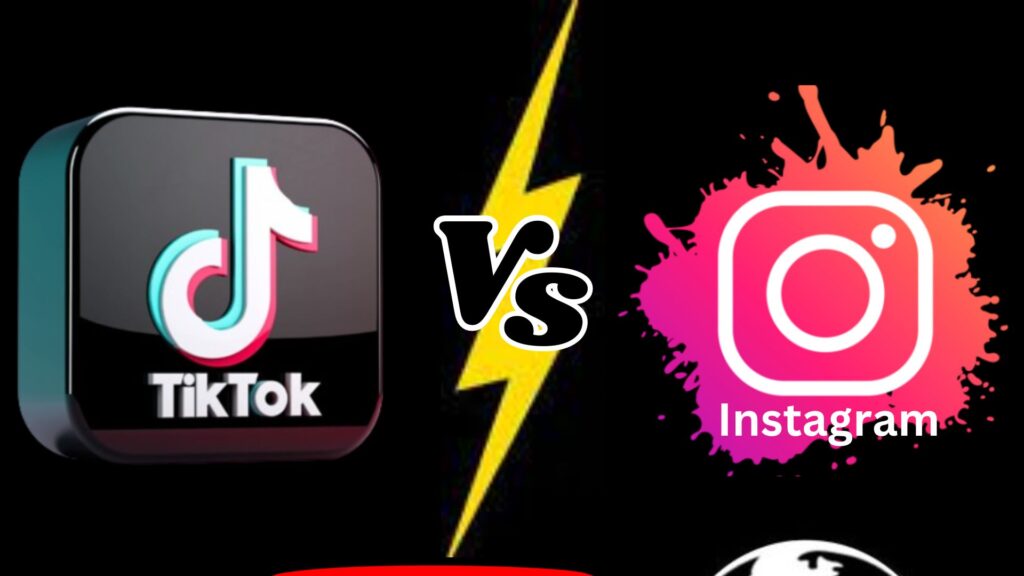In the realm of social media, where platforms vie for user attention and engagement, TikTok and Instagram stand out as two titans in their own right. Both platforms offer unique features, catering to diverse audiences and serving various purposes. Whether you’re a casual user, a content creator, or a business looking to expand its digital presence, understanding the strengths and weaknesses of each platform is crucial. In this comprehensive comparison, we’ll delve into the intricacies of TikTok Vs Instagram, exploring their features, audience demographics, content formats, and marketing potential.
Introduction to TikTok and Instagram
TikTok: TikTok burst onto the scene in 2016, quickly becoming a global sensation. It’s a video-centric platform where users can create and share short-form videos ranging from a few seconds to a minute in length. With its emphasis on creativity, music, and trends, TikTok has amassed a diverse user base spanning various demographics.
Instagram: Instagram, on the other hand, has been a prominent player in the social media landscape since its launch in 2010. Initially known for photo sharing, Instagram has evolved to incorporate a wide array of features, including photos, videos, stories, reels, IGTV, and shopping functionalities. It boasts over a billion active users worldwide, making it one of the most popular social media platforms.
Audience Demographics
Instagram: Instagram has a more diverse user base in terms of age, with a substantial presence of users across different age groups. While it remains popular among younger demographics, including Gen Z and Millennials, it also attracts older users, particularly those in the 30-49 age range. This broad demographic appeal makes Instagram an attractive platform for businesses targeting a wide audience.
Content Formats
TikTok: TikTok is synonymous with short-form video content, typically ranging from 15 to 60 seconds. The platform provides users with a variety of creative tools, including filters, effects, and music libraries, enabling them to produce engaging and entertaining videos. TikTok’s algorithm-driven “For You” page ensures that users are exposed to a diverse range of content tailored to their interests, fostering virality and discoverability.
Instagram: Instagram offers a diverse range of content formats, including photos, videos, stories, reels, IGTV, and shopping posts. Photos and videos can be shared in the main feed, while stories allow users to share ephemeral content that disappears after 24 hours. Reels, similar to TikTok, enable users to create short-form videos, while IGTV allows for longer-form video content. The platform’s versatility appeals to users with varying content preferences and creative styles.
Engagement and Interaction
TikTok: TikTok prioritizes user engagement through features such as likes, comments, shares, and duets (where users can create videos alongside existing content). The platform’s algorithm analyzes user behavior and preferences to personalize the content feed, maximizing engagement and retention. TikTok’s emphasis on virality and trends encourages users to interact with content actively, contributing to a vibrant and dynamic community.
Instagram: Instagram facilitates engagement through likes, comments, shares, direct messages, and story reactions. The platform’s algorithm prioritizes content based on relevance, recency, and user interactions, ensuring that users see content tailored to their interests. Instagram’s emphasis on visual storytelling encourages meaningful interactions, fostering connections between users and content creators.
Monetization Opportunities
TikTok: TikTok offers various monetization opportunities for content creators, including the TikTok Creator Fund, brand partnerships, sponsored content, and live gifts. The Creator Fund allows eligible creators to earn money based on the performance of their content, while brand partnerships and sponsored content enable creators to collaborate with brands for promotional purposes. Additionally, TikTok’s live gifts feature allows users to purchase virtual gifts for their favorite creators during live streams, providing an additional revenue stream.
Instagram: Instagram provides multiple avenues for monetization, including brand partnerships, sponsored content, affiliate marketing, and Instagram Shopping. Influencers and content creators can collaborate with brands to create sponsored posts, stories, reels, and IGTV content, earning money in the process. Instagram Shopping enables businesses to sell products directly through the platform, driving sales and revenue. Additionally, creators can leverage affiliate marketing to earn commissions by promoting products and services to their followers.
Marketing Potential
TikTok: TikTok offers a fertile ground for innovative and engaging marketing campaigns, thanks to its highly engaged user base and immersive content experiences. Brands can leverage TikTok’s creative tools and trends to create authentic and memorable content that resonates with users. The platform’s algorithm-driven feed ensures that content has the potential to reach a wide audience, driving brand awareness and engagement. TikTok’s influencer marketing ecosystem also provides opportunities for brands to collaborate with popular creators and leverage their influence to promote products and services.
Instagram: Instagram remains a powerhouse for social media marketing, offering a suite of features designed to help businesses connect with their target audience. From visually stunning feed posts to interactive stories and engaging reels, Instagram provides brands with various tools to showcase their products and tell their stories. The platform’s robust advertising platform allows businesses to reach specific demographics, target audiences based on interests and behaviors, and track the performance of their campaigns in real-time. Instagram’s influencer marketing ecosystem is also thriving, with influencers playing a pivotal role in driving brand awareness, engagement, and conversions.
See Also – Can I Post to My Instagram Story From my Computer?
Conclusion
Both TikTok and Instagram offer unique opportunities for users, content creators, and businesses to connect, engage, and thrive in the digital landscape. While TikTok excels in short-form video content and virality, Instagram stands out for its diverse content formats, broad audience appeal, and robust marketing capabilities. Ultimately, the choice TikTok Vs Instagram depends on your objectives, target audience, and content preferences. Whether you’re looking to entertain, inspire, educate, or promote, both platforms provide ample opportunities for creativity, expression, and growth in the ever-evolving world of social media.

